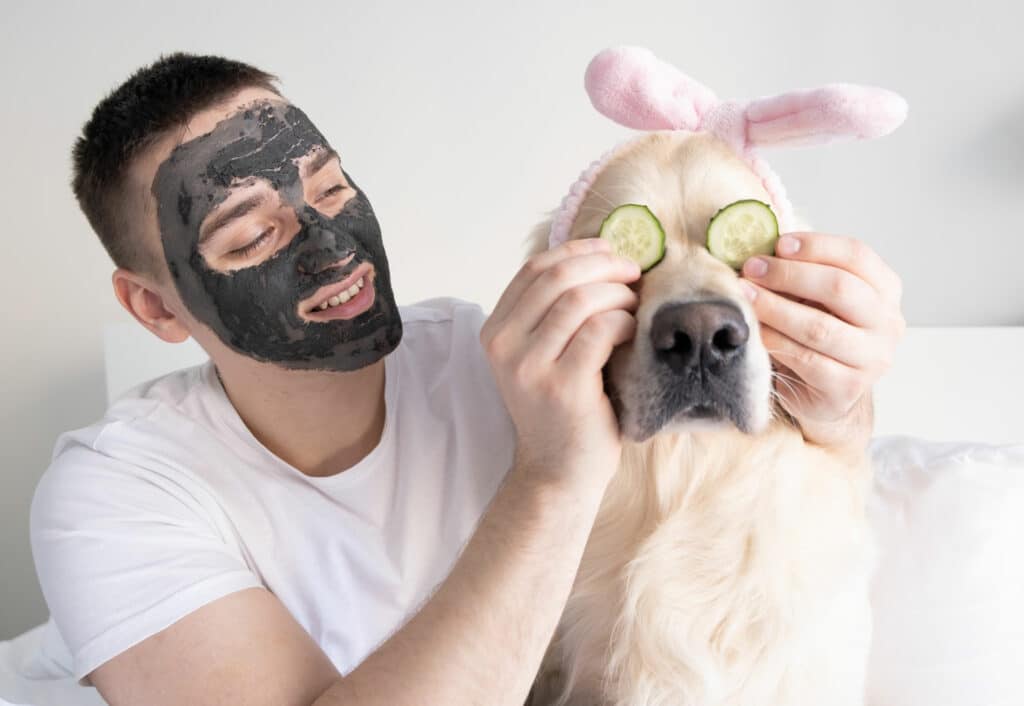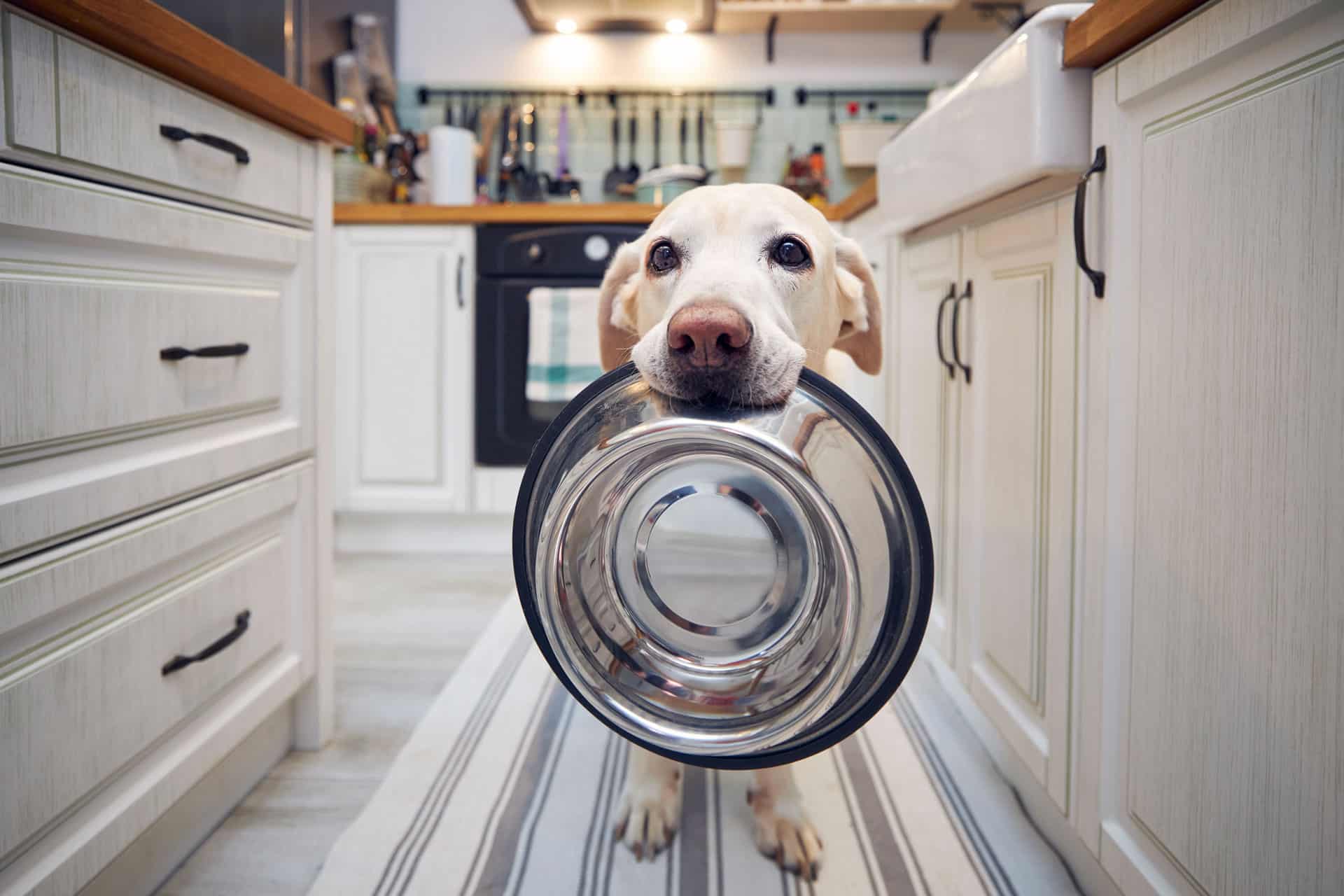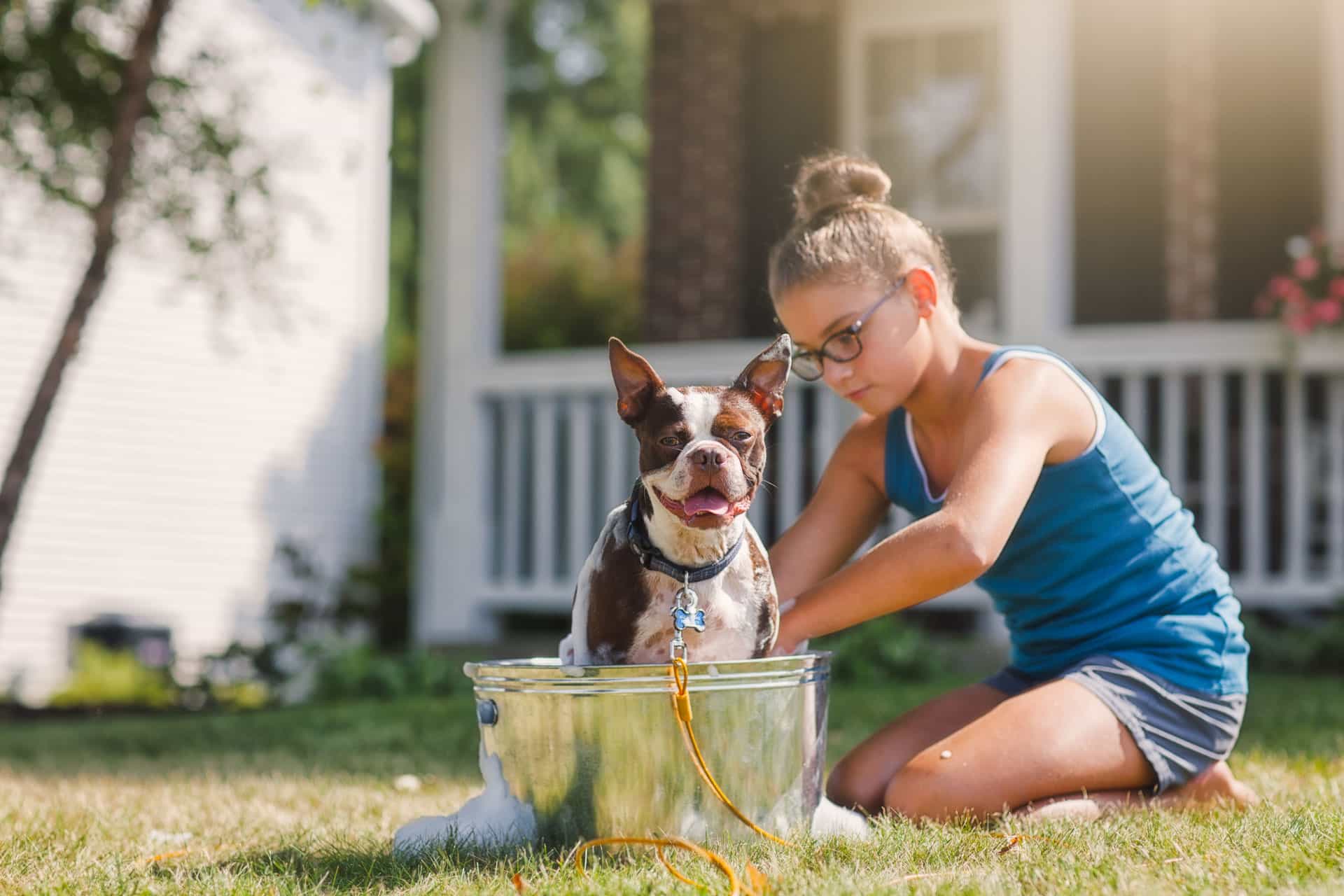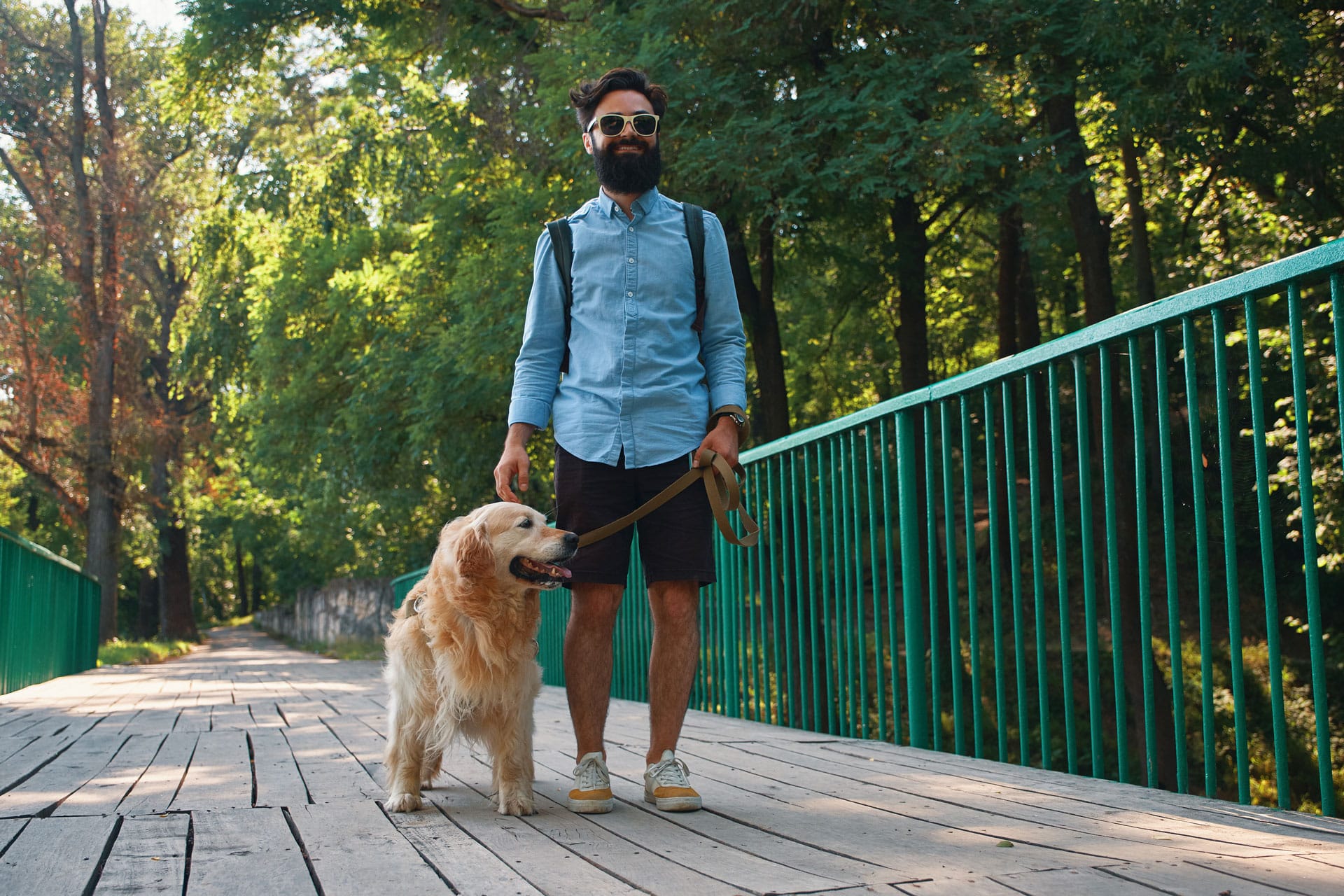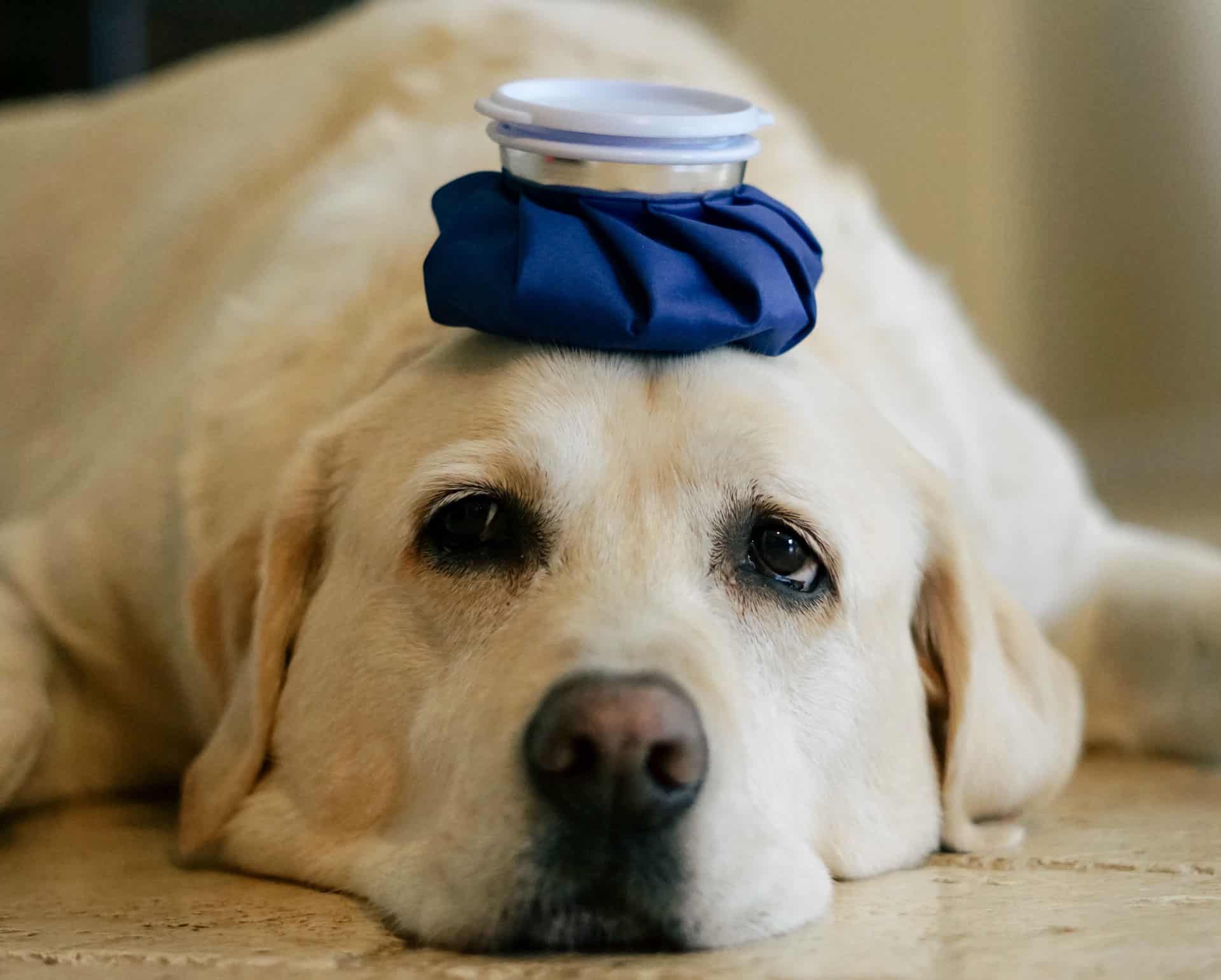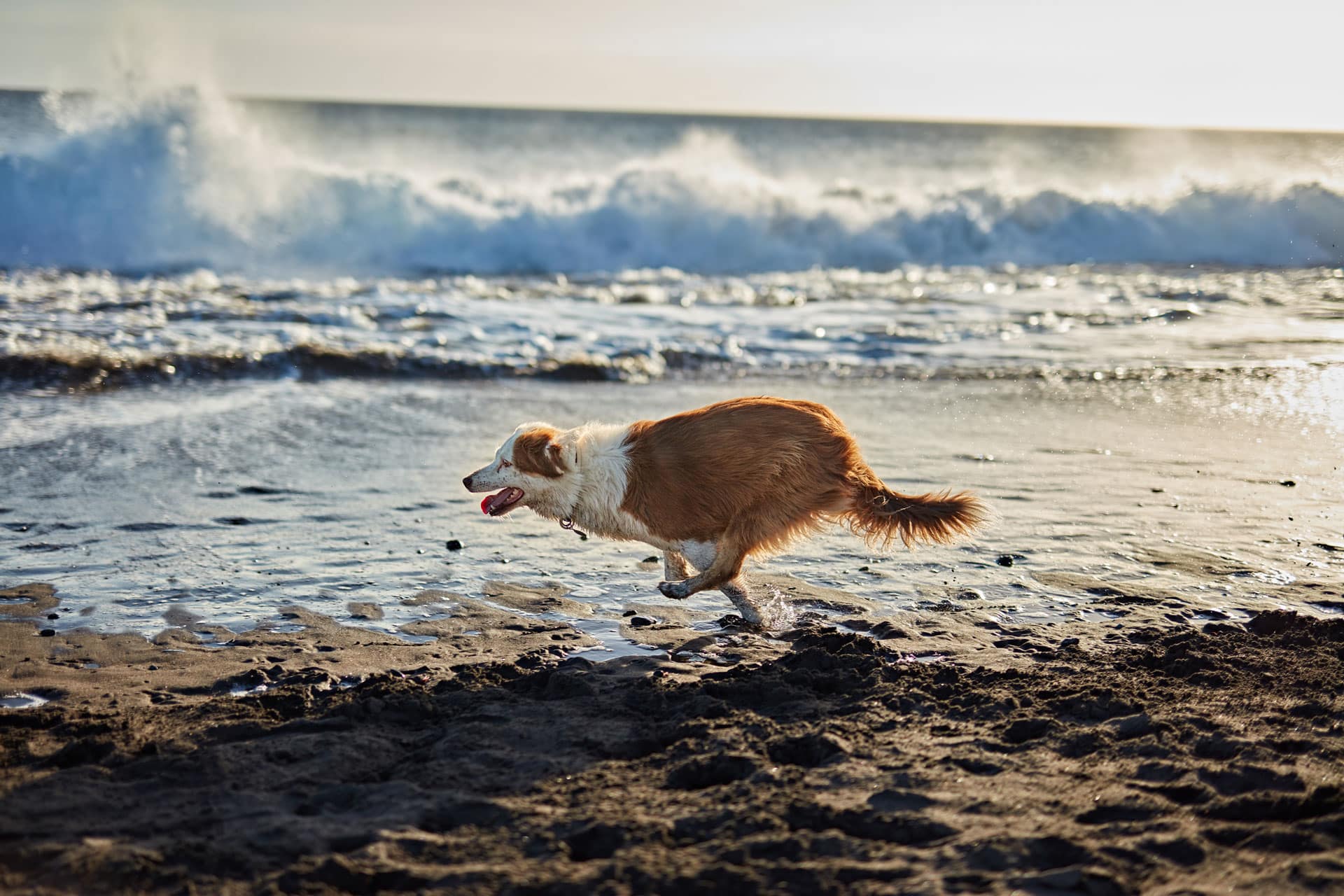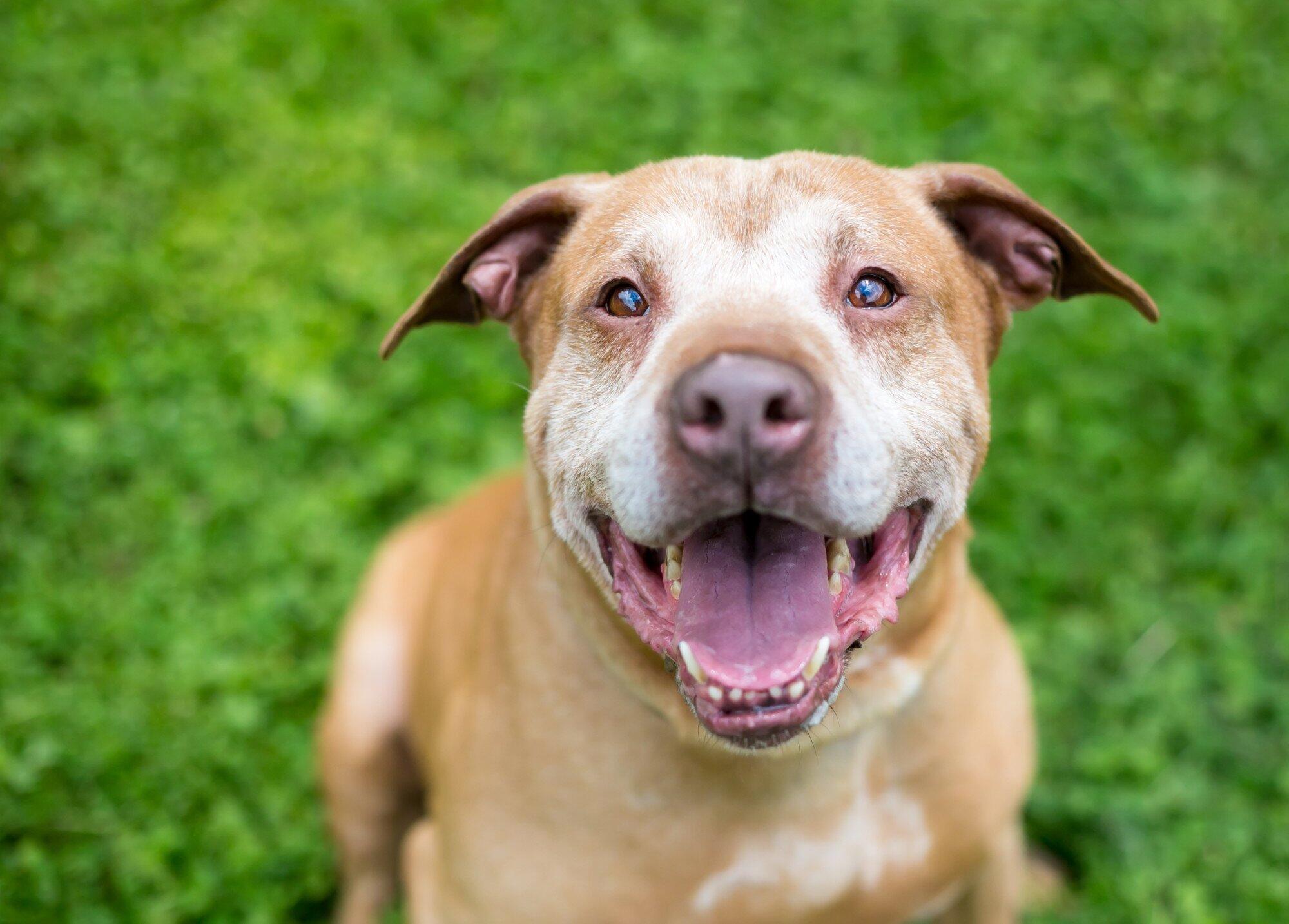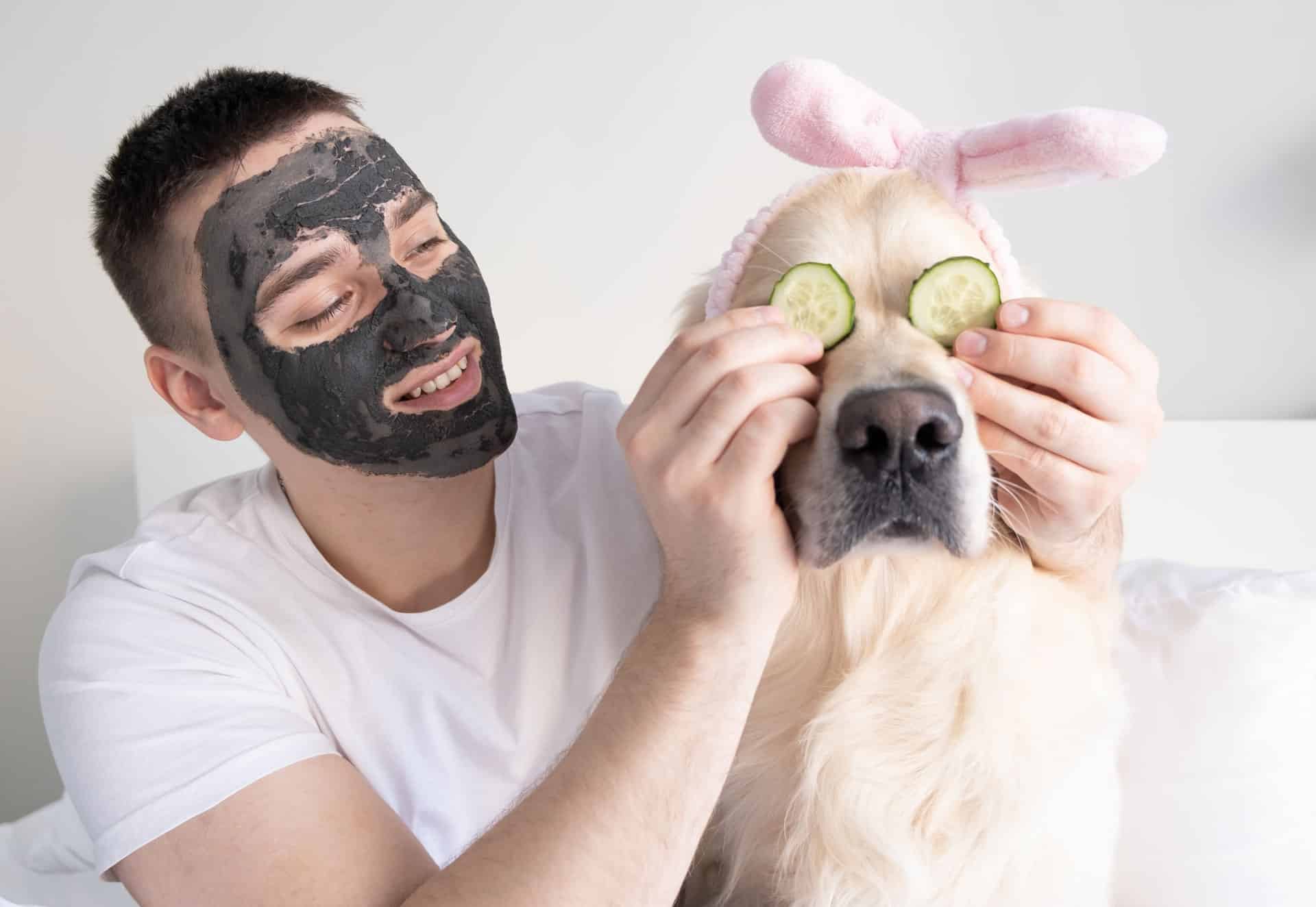Introduction
Are you a proud dog owner? If so, then you know how much joy these furry companions can bring to our lives. But with that joy comes the responsibility of proper dog care. Taking care of your pet’s health and well-being is not only necessary for their happiness but also for yours as well. In this blog post, we’ll discuss the importance of proper dog care and share some valuable tips on feeding, grooming, exercise, and common health issues that every responsible pet owner should be aware of. So let’s dive into it!
The importance of proper dog care
Proper dog care is essential for the overall health and happiness of your furry friend. As a responsible pet owner, you should prioritize their well-being by providing adequate nutrition, grooming, exercise, and medical attention.
Feeding your dog a balanced diet that meets its nutritional needs is crucial to maintaining good health. Consult with your veterinarian to determine the right type and amount of food for your dog’s age, breed, and lifestyle. It’s also important to avoid feeding them table scraps or foods that are toxic to dogs such as chocolate or grapes.
Regular grooming practices like bathing, brushing, and nail trimming not only keep them looking great but also prevent skin irritations and infections. Keep an eye out for any abnormalities on their coat or skin during grooming sessions.
Exercise is vital in keeping dogs physically fit and mentally stimulated. Different breeds have different exercise requirements so research what activities suit them best. Playing fetch or taking walks are easy ways to bond with your pup while getting some exercise.
Always be vigilant about common health issues that dogs face such as fleas/ticks, allergies, ear infections, etc., by checking regularly for signs/symptoms of illness. Never hesitate to take them to the vet when needed as early intervention can save lives!
By being proactive in proper dog care practices you’ll help ensure a happy healthy life together!
The benefits of having a healthy and happy dog
Having a healthy and happy dog is not only beneficial for your furry friend, but it also has numerous advantages for you as an owner. A well-cared-for dog can bring joy and companionship to your life, while also providing emotional support.
One of the most significant benefits of having a healthy dog is that they are less likely to develop health problems that require expensive veterinary care. Regular visits to the vet, proper nutrition, exercise, and grooming can help prevent illnesses such as obesity, dental issues, or skin infections.
A happy and healthy dog will have more energy and enthusiasm for activities such as playing fetch or going on walks with their owners. This level of activity promotes better overall physical fitness in both dogs and humans alike.
In addition, caring for a pet helps build stronger bonds between pet owners and their pets. Dogs thrive on attention from their human families; when provided with love affectionate gestures like cuddles or belly rubs ensure that they remain contented over time which subsequently reduces anxiety levels.
Having a healthy dog provides numerous benefits including enhanced physical fitness mental well-being improved family relationships along with the reduced risk of illness hence ensuring all-around happiness!
Feeding Your Dog
Feeding is one of the most important aspects of proper dog care. It not only affects a dog’s physical health but also its mental well-being. The key to feeding your dog is to ensure they receive a nutritionally balanced diet that meets their specific needs.
When it comes to how often you should feed your dog, this depends on factors such as age, breed, and activity level. Puppies require more frequent meals than adult dogs while older dogs may do better with smaller, more frequent meals.
It’s important to choose a high-quality food that contains all the necessary nutrients without unnecessary fillers or additives. Avoid feeding your dog table scraps or human food which can be harmful and lead to obesity.
Portion control is crucial for maintaining a healthy weight in dogs. Overfeeding can lead to obesity which puts additional strain on joints and organs leading to serious health problems later in life.
If you need to transition your dog onto a new diet, do so gradually over several days by mixing small amounts of the new food into their current diet until they are fully switched over.
By following these tips and ensuring your furry friend receives proper nutrition through regular feeding habits, you will help keep them happy, healthy, and full of energy!
How often to feed a dog
Feeding your dog is an important aspect of proper dog care. One commonly asked question by pet owners is how often they should feed their furry friends. The answer to this question depends on various factors such as the age, breed, size, and activity level of your dog.
Puppies require more frequent meals than adult dogs since they are still growing and developing. It is recommended to feed puppies three to four small meals a day until they reach six months old. After six months, you can reduce their feeding schedule to twice a day.
Adult dogs usually do well with two meals per day – one in the morning and one in the evening. However, some prefer multiple smaller meals throughout the day while others may only need one big meal.
It’s essential to establish a feeding routine that works best for both you and your pup. Stick with consistent mealtimes so that your dog knows when it’s time to eat.
Also, ensure that you’re providing them with high-quality food that meets their nutritional needs based on their life stage and activity level. Overfeeding or underfeeding can lead to health issues like obesity or malnutrition.
There is no one-size-fits-all answer when it comes to how often you should feed your canine companion. It’s crucial to consider individual factors such as age, size, breed, and activity level when determining a feeding schedule for optimal health benefits.
What types of food to feed and avoid
Choosing the right type of food to feed your dog is crucial for their overall health and well-being. When it comes to selecting a diet for your furry friend, there are many different options available in the market. However, not all types of food are created equal.
One key factor to consider when choosing dog food is whether it meets its nutritional requirements. Dogs need a balanced diet that includes protein, carbohydrates, fats, vitamins, and minerals.
It’s important to avoid feeding dogs human foods that can be harmful to them such as chocolate, caffeine, or grapes. These foods can lead to serious health problems including kidney failure and death.
When looking at commercial dog food brands look for those with fewer fillers like grains or artificial preservatives which can cause allergic reactions in some dogs. Instead, opt for high-quality meat proteins like chicken or beef which provide essential nutrients without unnecessary additives.
Additionally, raw diets have become increasingly popular among pet owners recently but should only be used under the guidance of a veterinarian since they can pose risks if not prepared properly.
Choosing healthy and nutritious meals will help ensure your furry friend stays happy and healthy for years to come!
The importance of portion control
Portion control is an essential aspect of proper dog care. Overfeeding can lead to weight gain, which can result in various health issues such as joint problems, diabetes, and heart disease.
How much food a dog needs depends on factors like age, weight, breed, and activity level. It’s important to follow the feeding guidelines provided by the pet food manufacturer or consult with a veterinarian for customized advice.
Free-feeding or leaving food out all day can lead to overeating and obesity in dogs. Instead, feed your dog at set times each day using measured portions.
It’s also important to avoid giving too many treats or table scraps that are high in fat and calories. These extra calories add up quickly and can contribute to weight gain.
Remember that portion control goes beyond just measuring the amount of food you give your dog at mealtimes. It also includes being mindful of how much they eat throughout the day from other sources like treats and human food.
By practicing portion control, you’ll help keep your furry friend healthy and prevent potential health issues down the road.
Tips for transitioning to a new diet
Transitioning your dog to a new diet can be a challenge, but it’s important for their health and well-being. Here are some tips to make the process easier:
1. Introduce the new food gradually: Start by mixing a small amount of the new food with the old food and slowly increase the proportion over several days or weeks.
2. Don’t switch cold turkey: Abruptly changing your dog’s diet can cause digestive upset like vomiting or diarrhea, so take it slow.
3. Stick to one type of protein: If you’re switching to a different brand or type of food, try to keep the protein source consistent (e.g., chicken instead of beef) to lessen any potential stomach issues.
4. Use treats for motivation: Reward your dog with healthy treats when they eat their new food, so they associate positive reinforcement with trying something new.
5. Monitor closely: Keep an eye on your pup’s stool consistency and overall energy levels during this transition period – if anything seems off, consult with your vet before continuing the change in diet.
Remember that every dog is different and may react differently when transitioning diets; patience is key here!
Grooming Your Dog
Grooming is an important aspect of dog care that should not be overlooked. Regular grooming practices can help maintain a healthy coat and skin, prevent infections and parasites, and keep your furry friend looking and feeling their best.
Bathing your dog regularly is essential to maintaining good hygiene. However, it’s important to use the right type of shampoo for your dog’s specific needs. Dogs with sensitive skin may require hypoallergenic shampoos while dogs with oily coats may benefit from clarifying shampoos.
Regular brushing helps distribute natural oils throughout the coat which keeps it shiny and healthy. It also helps remove any loose hair which prevents matting or tangling of fur. Nail trimming should also be part of regular grooming as overgrown nails can cause discomfort and even affect how your pet walks.
In addition to these basic grooming practices, cleaning your dog’s ears regularly helps prevent ear infections while dental care such as teeth brushing or providing dental chews can help keep their teeth clean and reduce bad breath.
Proper grooming practices are essential for keeping your furry friend happy, healthy, and comfortable in their skin!
Regular grooming practices
Regular grooming practices are essential to ensure the health and happiness of your furry friend. Grooming not only helps maintain your dog’s appearance but also prevents a variety of health issues.
Bathing is an important part of grooming, which helps in keeping the skin and coat clean and healthy. However, it is crucial to choose a suitable shampoo for dogs as human shampoos can irritate their skin. Regular brushing removes loose fur, dirt, and debris from the coat while improving blood circulation.
Nail trimming is another vital aspect of grooming that should be done regularly to prevent ingrown nails or infections. It would help if you used proper nail clippers designed specifically for dogs to avoid hurting them.
Cleaning ears and teeth are also part of regular grooming practices that keep dental problems at bay while preventing ear infections caused by wax buildup.
Regular grooming practices play a significant role in maintaining your dog’s overall health and well-being. Incorporating these habits into your routine will not only save money on vet bills but also make sure you have a happy pup with shiny fur!
Importance of bathing, brushing, and nail trimming
Maintaining proper hygiene is crucial for a dog’s overall health and well-being. Bathing, brushing, and nail trimming are essential grooming practices that every responsible pet owner must perform regularly.
Bathing your dog helps to keep its coat clean and free of dirt, debris, and parasites. It also helps to reduce the risk of skin infections caused by bacteria or fungi. However, it is important not to bathe your dog too often as it can strip away natural oils from its skin.
Brushing your dog’s coat regularly has many benefits such as promoting healthy skin and coat, preventing matting, and removing loose fur and dead hair. It also allows you to check for any lumps, bumps, or injuries on your dog’s body which may require medical attention.
Nail trimming is another critical aspect of grooming that should not be overlooked. Overgrown nails can cause discomfort when walking, increase the risk of injury during playtime or exercise as well as make them more prone to infection.
It is important to use proper tools when bathing, brushing, and trimming nails so as not to hurt the animal in any way. If you’re unsure about how best to groom your pet consult with a professional groomer who will offer guidance on what’s best for your specific breed/animal type.
How to prevent skin and coat problems
Proper grooming is essential to maintaining a dog’s overall health and well-being. One of the most important aspects of grooming is taking care of a dog’s skin and coat. Skin and coat problems are common issues that many dogs face, but with proper care, they can be easily prevented.
Regular bathing is one way to prevent skin and coat problems in dogs. It helps to remove dirt, bacteria, and other irritants from their skin which can cause itching and inflammation. However, over-bathing can lead to dryness or even strip the natural oils that keep your dog’s coat healthy.
Another key aspect of preventing skin and coat problems is brushing your dog regularly. This not only helps remove loose hair but also stimulates the production of natural oils on their skin which help keep their fur shiny, smooth, and soft while eliminating tangles or mats caused by excess dead hairs.
It’s equally important to trim your dog’s nails frequently as long nails may catch onto things around them causing injury or discomfort during walking or playing activities leading thus leading to severe consequences like arthritis.
Lastly ensuring you feed your furry friend a balanced diet rich in vitamins E, B, D, Niacin, and Omega 3&6 fatty acids will help maintain healthy functioning oil glands producing an optimal amount of oil for its body enhancing healthier skin & shinier coats!
Following these simple tips for preventing common skin and coat problems in dogs will ensure they stay happy & healthy!
Tips for cleaning a dog’s ears and teeth
Proper dental hygiene and ear care are essential for your dog’s health. Neglecting these areas could lead to serious health problems. Here are some tips for keeping your furry friend’s teeth and ears clean.
Cleaning a Dog’s Teeth
Dental hygiene is important, but it can be challenging to clean a dog’s teeth. Start by getting them used to having their mouth touched by gently rubbing around their gums with your finger wrapped in gauze or a soft cloth, gradually working up to using a toothbrush designed specifically for dogs.
Use only toothpaste made for dogs since human toothpaste contains ingredients that may harm them. Brush their teeth weekly or daily if possible, paying special attention to the back molars where plaque buildup often occurs.
Cleaning a Dog’s Ears
Regular cleaning of your dog’s ears is necessary as they build up dirt, wax, and debris over time – this could cause infections that would require veterinary treatment. To begin with, inspect the ears regularly while massaging the base of each ear gently between thumb and forefinger; checking out any unusual odor or discharge.
Clean out any visible debris from inside the ear flap using cotton balls (avoid cotton swabs), then squirt an ear-cleaning solution into one of the ear canals before allowing your pet to shake its head vigorously after which you should wipe away excess moisture with another cotton ball.
Practicing good dental hygiene and regular cleaning of your dog’s ears not only helps prevent bad breath and infection but also keeps them healthy overall. Make sure you use appropriate products when taking care of these sensitive areas – always consult a professional veterinarian if unsure about anything concerning your pets’ health!
Give Your Dog Exercise
Exercise is an essential part of proper dog care. Just like humans, dogs need regular physical activity to maintain a healthy weight and prevent health issues. Exercise also helps dogs stay mentally stimulated and happy.
The amount and type of exercise your dog needs depends on their breed, age, size, and overall health condition. A high-energy dog will require more exercise than a sedentary one. Small breeds may only need short walks while larger breeds may benefit from longer runs or hikes.
Apart from traditional walks or runs with your furry friend, other fun activities can help keep them physically active such as playing fetch or tug-of-war games. You could also consider enrolling them in training classes that incorporate physical activity into the lessons.
Make sure to take safety precautions when exercising with your dog – always bring water for hydration during long walks/runs, avoid walking/running on the hot pavement during summer months as it can burn their paws, and use a leash/harness to ensure they don’t run off.
Exercise is crucial for maintaining good physical and mental health in dogs. By providing regular opportunities for playtime and activity tailored to their specific needs you are ensuring that they lead happy lives filled with enjoyment!
Importance of exercise for dogs
Exercise is an essential part of a dog’s life, and it helps them maintain a healthy weight while also reducing their risk for many health issues. Dogs who don’t get enough exercise are more likely to become overweight or develop anxiety and behavioral problems.
The amount of exercise your dog needs depends on its breed, age, and overall health. For example, high-energy breeds like Border Collies need more physical activity than smaller breeds like Chihuahuas. Generally speaking, dogs should have at least 30 minutes of moderate-intensity exercise each day.
Exercise doesn’t just benefit the body; it also benefits the mind. It provides mental stimulation that can help prevent boredom and destructive behavior in dogs. Going on walks or playing fetch with your pup is not only good for their physical well-being but also encourages bonding between pet owners and their furry friends.
It’s important to note that proper precautions should be taken when exercising your dog, especially during hot weather conditions. Make sure they always have access to clean water and take frequent breaks if necessary.
Regular exercise is crucial for a happy and healthy canine companion!
Recommended types and amounts of exercise for different breeds
Just like humans, dogs need exercise to maintain their physical and mental health. However, not all breeds require the same types and amounts of exercise. The recommended exercises for a Chihuahua may be different from those for a Labrador Retriever.
For small dog breeds such as Chihuahuas or Pomeranians, short walks around the block or playing indoors can suffice. On the other hand, larger breeds such as Great Danes or Boxers require more rigorous activities like running and hiking.
Breeds with high energy levels like Border Collies or Australian Shepherds thrive on intense activities such as agility training or long-distance running while calmer breeds like Basset Hounds prefer strolls.
It’s important to note that some breeds are more susceptible to joint problems than others. For these dogs, low-impact exercises such as swimming or walking on soft surfaces are ideal.
Ultimately, it’s up to each pet owner to tailor their dog’s exercise routine based on their breed and specific needs. Remember that regular exercise is key to keeping your furry friend happy and healthy!
How to make exercise fun for dogs
Exercise is an essential part of a dog’s overall health and well-being. But how do you make it fun for your furry friend? One way to make exercise more enjoyable is by incorporating games into their routine.
Playing fetch or tug-of-war with your dog can be a great way to get them moving while also providing mental stimulation. Another fun game to play with your pup is hide-and-seek, where you hide treats around the house or yard for them to find.
Taking your dog on walks in new and exciting locations can also help keep things interesting. Exploring different trails, parks, and neighborhoods can provide new sights and scents for your pup to discover.
In addition, enrolling in obedience classes or agility training can give both you and your dog a chance to learn new skills while exercising together. These types of activities not only provide physical exercise but also promote bonding between owner and pet.
Remember that every dog has different preferences when it comes to exercise, so try out different activities until you find what works best for both you and your furry friend. By making exercise fun, it becomes something that both dogs and owners look forward to each day.
Tips for exercising safely
Exercise is an important aspect of a dog’s life, but it’s essential to do it safely. Here are some tips for exercising your furry friend without putting them in danger.
Firstly, always make sure that your dog is up-to-date on their vaccinations and has been cleared by the vet for physical activity. This will help prevent any underlying health issues from being exacerbated during exercise.
Secondly, before starting any new exercise routine with your dog, start with short sessions and gradually increase the intensity and duration over time. This helps prevent injuries or exhaustion.
Thirdly, be mindful of the weather conditions when taking your pet out for a walk or run. Extreme heat or cold can be dangerous for dogs; limit outdoor activities during very hot or very cold weather conditions.
Keep an eye on your furry companion while they’re exercising – this way you can monitor their behavior and recognize signs that indicate they may need rest such as panting excessively or seeming lethargic.
In summary, these tips should ensure that both you and your furry friend enjoy safe and healthy exercise routines!
Common Health Issues Among Dogs
Dogs are prone to various health issues, some of which can be quite serious. One of the most common health problems that dogs face is obesity. Overfeeding and lack of exercise can lead to excess weight gain in dogs, which puts them at risk for a variety of other health issues such as heart disease and diabetes.
Another common issue is dental problems. Dogs need regular dental care just like humans do; neglecting their teeth can result in tooth decay, gum disease, and even infections that could affect other parts of their bodies.
Skin allergies and infections are also prevalent among dogs. Environmental factors like dust mites or pollen can cause skin irritation or allergic reactions while bacteria or fungi may infect dog’s skin leading to rashes, hair loss, or hot spots.
Moreover, joint problems such as arthritis are another concern for older dogs who tend to suffer from mobility-related issues due to weaker joints.
As responsible pet owners, we should always watch out for any unusual behavior changes in our pets since early detection is key when it comes to treating these issues before they worsen.
Common health issues that dogs face
Just like humans, dogs can also face various health issues throughout their lives. As a responsible pet owner, it’s important to be aware of these common health problems and take necessary measures to prevent them.
One of the most common health issues that dogs face is dental problems. Poor dental hygiene can lead to gum disease, tooth decay, and other serious conditions. To prevent this, regular teeth cleaning should be done by either brushing your dog’s teeth or providing them with chew toys specifically designed for dental care.
Another common issue is skin allergies caused by flea bites or food sensitivities. Dogs may excessively scratch or lick themselves resulting in irritated skin and infections. It’s important to regularly check for fleas and ticks on your dog using preventative treatments such as flea collars or medication prescribed by a veterinarian.
Obesity is also becoming an increasingly prevalent problem among dogs due to overfeeding and lack of exercise. Obesity can lead to numerous health concerns including joint pain, heart disease, and diabetes. Proper portion control along with daily exercise are key factors in preventing obesity in dogs.
Other issues such as ear infections, arthritis, and respiratory illnesses may also affect your furry friend at some point in their life. Regular visits to the vet along with proper nutrition and exercise could help reduce the likelihood of these conditions arising.
Being an informed pet owner means being prepared for all potential outcomes when it comes to protecting the physical well-being of our pets!
How to prevent these issues
Preventing health issues in dogs is crucial for ensuring their well-being and longevity. One of the most important things you can do to prevent common health issues in your dog is to provide them with a nutritious diet. Feeding your dog high-quality food that meets their nutritional needs can help strengthen their immune system and keep them healthy.
Another way to prevent health issues in dogs is through regular exercise. Exercise helps maintain a healthy weight, improves cardiovascular function, and reduces stress levels in dogs. It’s recommended that adult dogs get at least 30 minutes of moderate exercise each day.
Grooming also plays an important role in preventing certain health problems such as skin infections or dental disease. Regular brushing and bathing can help keep your dog’s coat clean and free from mats or tangles. Additionally, cleaning your dog’s ears regularly with an ear cleaner solution can reduce the risk of infection.
Preventative measures like yearly check-ups with a veterinarian are essential for catching potential health issues before they become serious problems. Your vet may recommend routine vaccinations, blood tests, or preventative medications based on your dog’s breed and overall health status.
It’s important to be aware of changes in behavior or physical appearance that could indicate an underlying medical issue. By keeping track of any unusual symptoms or behaviors exhibited by our furry friends we’re able to catch potential illnesses early on which makes treatment much more effective!
Signs and symptoms of illness to watch for
As a responsible dog owner, it’s important to know the signs and symptoms of illness that your furry friend may exhibit. One of the most obvious indicators is a behavior change. If your normally active pup suddenly becomes lethargic or refuses to eat, it may be feeling under the weather.
Other signs to watch for include vomiting, diarrhea, coughing, sneezing, or excessive panting. You should also keep an eye on their eyes and nose – if they’re watery, red, or have discharge coming from them, it could be a sign of infection.
If you notice any of these symptoms or anything out of the ordinary with your dog’s behavior or physical appearance, don’t hesitate to take them to see a veterinarian. Catching illnesses early can make all the difference in treatment and recovery time.
It’s also important to note that some illnesses may not show visible symptoms until they’ve progressed further along. That’s why regular check-ups with your vet are crucial for maintaining your pup’s health and catching any potential issues before they become serious problems.
By being vigilant about watching for signs and symptoms of illness in our furry friends, we can help ensure they stay healthy and happy for years to come.
When to take your dog to the vet
Regular vet visits are essential for maintaining your dog’s overall health and well-being. However, there may be times when you need to take your furry friend to the vet outside of their routine check-ups. Here are some signs that indicate it’s time for a trip to the veterinarian:
Firstly if your dog experiences any sudden changes in behavior or appetite, it could signal an underlying medical issue. Erratic behavior such as excessive lethargy, aggression, or nervousness should also be taken seriously.
Secondly, if you notice any unusual physical symptoms like vomiting or diarrhea lasting more than 24 hours; difficulty breathing; limping or favoring one leg; or bleeding from any part of the body then consult with a professional immediately.
Keeping track of your dog’s vaccination schedule is important too – this helps prevent many common diseases among dogs.
It is better to err on the side of caution and take them in for evaluation by a qualified veterinarian when necessary – don’t hesitate! Remember: Your dog’s health depends on regular care and attention from both you and your vet!
Conclusion
As a responsible dog owner, it is important to understand the significance of proper dog care. By providing your furry companion with healthy food, regular grooming practices, plenty of exercises, and necessary veterinary attention when needed, you can ensure that they lead a happy and healthy life.
Feeding your dog a balanced diet consisting of high-quality proteins and nutrients will not only keep them well-fed but also prevent common health issues such as obesity or digestive problems. Regular grooming practices including bathing, and brushing their teeth and fur help maintain their hygiene while also preventing skin diseases like rashes or infections.
Furthermore, taking your pet for daily walks or engaging in playtime activities ensures that they stay active both physically and mentally. This can improve their cardiovascular health while preventing other issues related to lack of physical activity.
In addition to these efforts, it is crucial to be aware of any potential health concerns specific to certain breeds so you can take appropriate measures to avoid them. By taking proactive steps towards ensuring proper dog care, you are setting up your beloved pet for a long-lasting healthy lifestyle full of joyous moments together.
The Rewards of responsible dog care
Taking care of a dog is not an easy task, but the rewards are numerous. The bond between a human and their furry companion can be incredibly strong, and responsible dog care helps to strengthen this bond even further.
One of the most obvious rewards of responsible dog care is having a healthy and happy pet. Proper feeding, grooming, exercise, and preventative health measures all contribute to keeping your dog in top physical condition. This means fewer trips to the vet for illness or injury and more time spent enjoying each other’s company.
In addition to physical health benefits, responsible dog care also has positive effects on mental well-being. Dogs thrive on routine and structure, so consistent daily activities such as feeding times and exercise routines can help reduce stress levels in both dogs and their owners.
Another reward of responsible dog care is the opportunity for personal growth. Taking on the responsibility of caring for another living teaches patience, empathy, compassion, discipline, and selflessness.
Owning a well-cared-for dog brings immeasurable joy into one’s life. Seeing their wagging tail when they greet you at home or cuddling with them after a long day provides comfort that few things can match.
Overall, responsible dog care takes effort but it’s worth it because it leads to healthier pets, a stronger bond between owner & pet, and personal growth opportunities while improving quality of life.
Encouragement to be a responsible pet owner
Taking care of a dog is not just a responsibility, but it is also a rewarding experience. A well-cared-for dog can bring joy and companionship to your life for many years. It’s important to remember that owning a dog requires time, effort, and patience.
As responsible pet owners, we must prioritize our dogs’ needs by providing them with proper diet, grooming, exercise, and medical attention when necessary. By doing so, we can ensure that our furry friends stay healthy and happy.
Remember to always be aware of the common health issues that dogs face and take preventative measures to avoid them. Pay attention to any signs or symptoms of illness in your furry friend and seek veterinary assistance if needed.
Being a responsible pet owner means committing yourself to providing the best possible care for your four-legged companion. The rewards are endless – from having an active playmate on walks to snuggling up next to you on the couch at night.
So let’s all strive towards making sure our beloved pets receive the best possible care they deserve!

